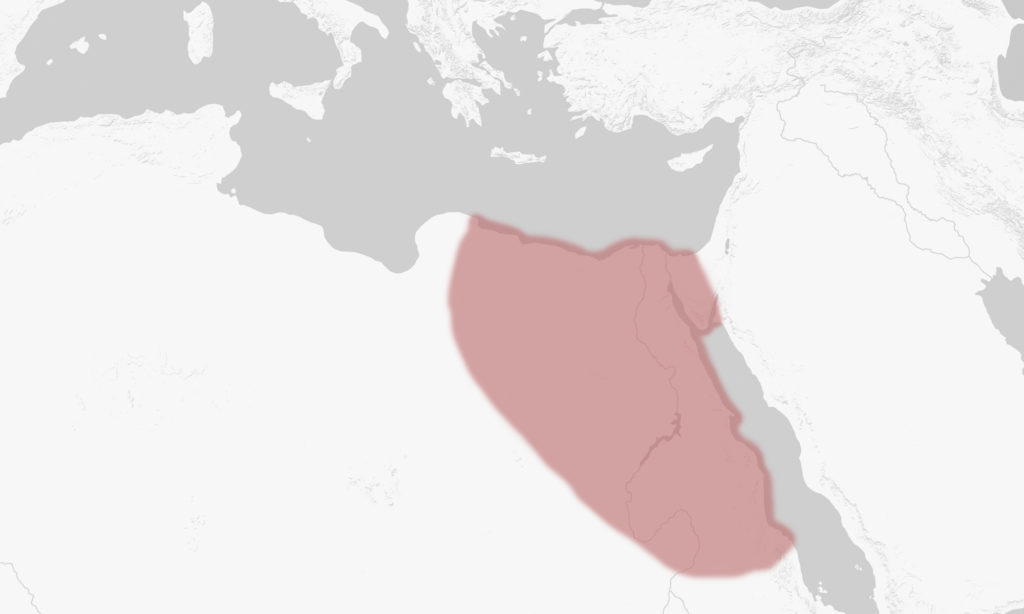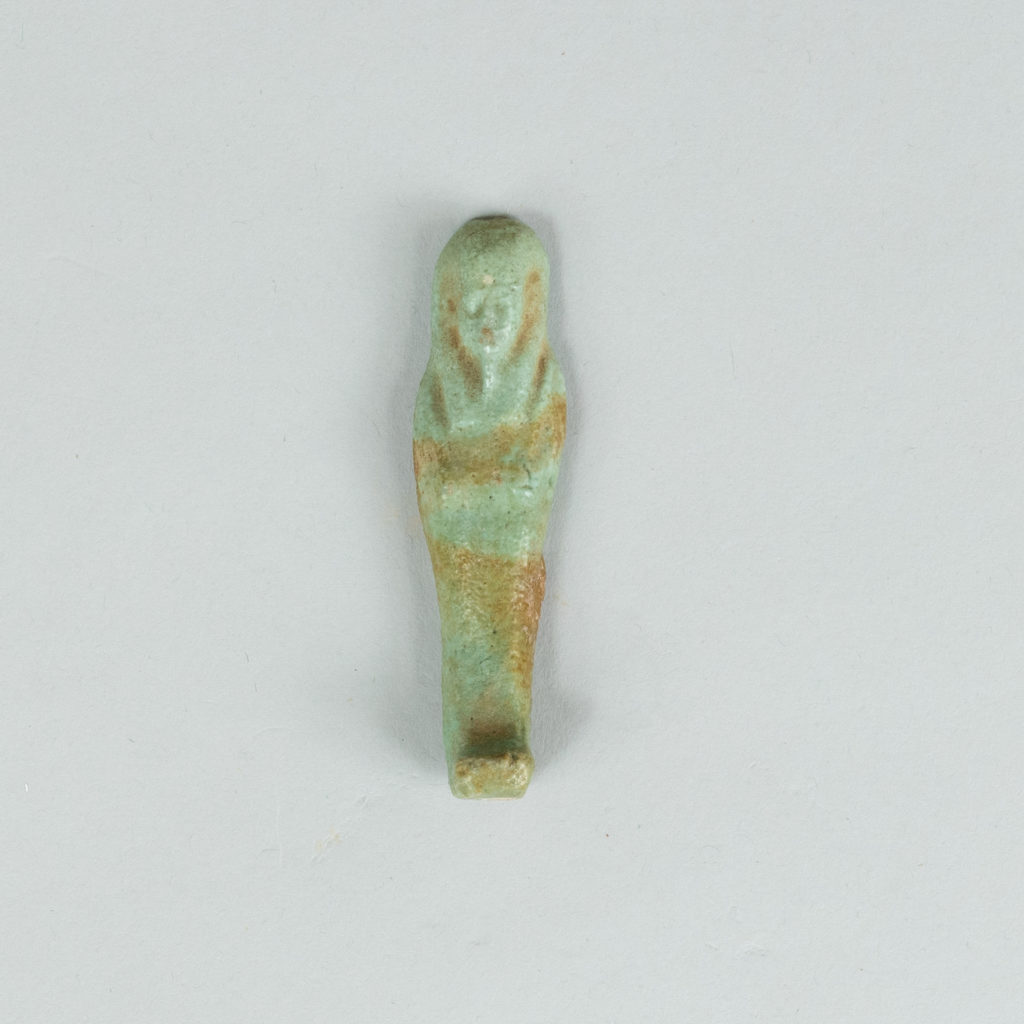


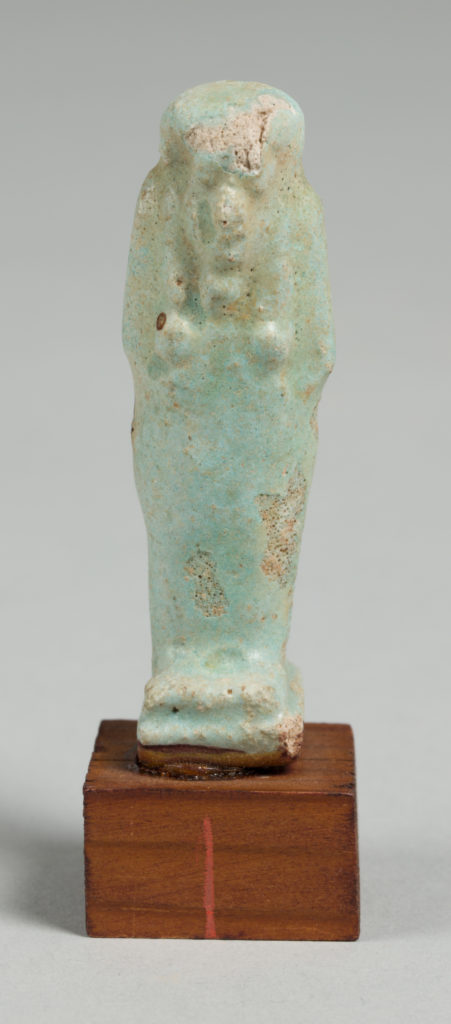
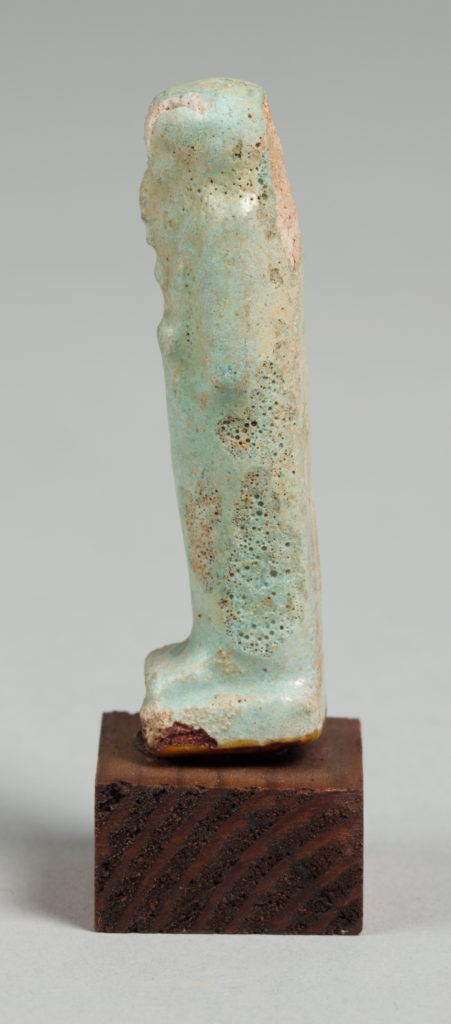
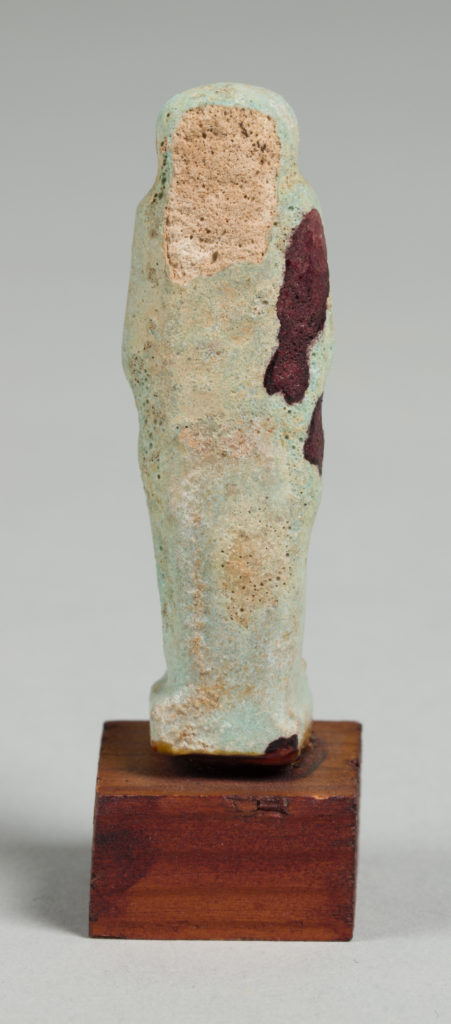
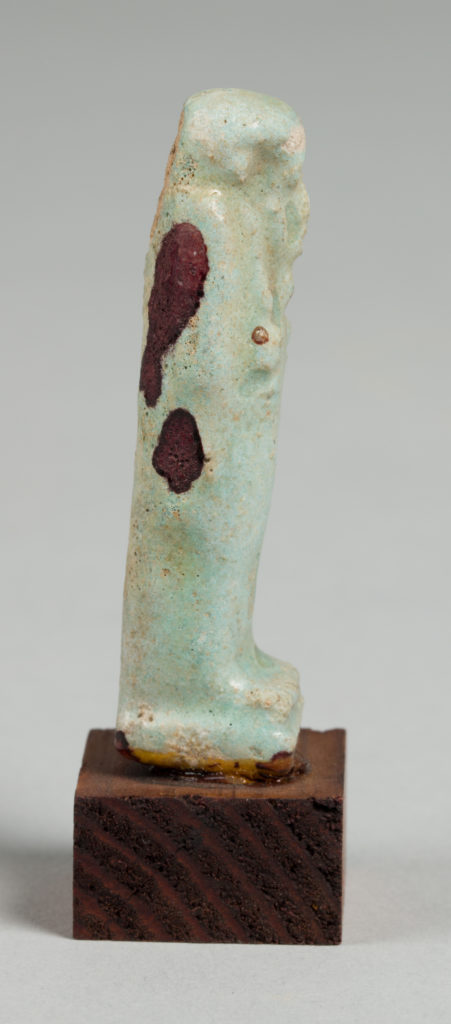
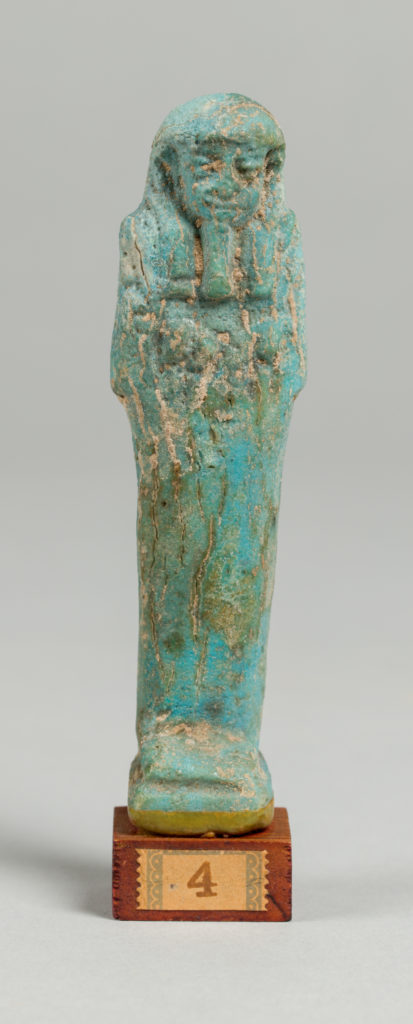

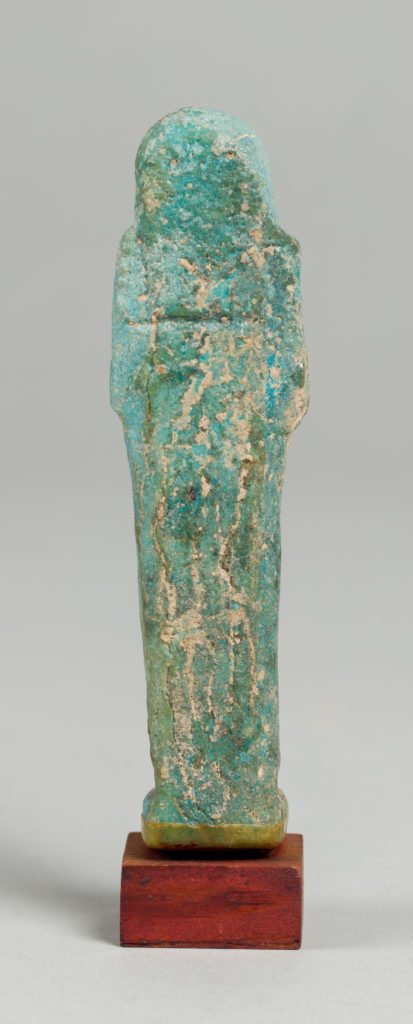

Gift of George Warren Hammond, Honorary Degree 1900, and Mrs. Hammond
1898.44.8_9_13_18Shabtis were small figurines deposited into Egyptian burials as servants for the deceased in the afterlife, a tradition begun in the Middle Kingdom (2040–1782 BCE) and continuing for two thousand years until the end of the Ptolemaic period (305–30 BCE). Shabtis could be made of many materials, including wood, stone, wax, and metals, but in later years were produced mostly out of faience, a frit-paste with blue-green glaze. In many cases, a shabti was provided for each day of the year, or more.
As Late Period shabtis were mold-made of faience, they could be produced quickly and cheaply. Because they were found in such high numbers, shabtis were readily available in Egyptian tourist markets during the nineteenth and early twentieth centuries, making them a popular souvenir for travelers like Dana Estes. In response to their popularity, a lively trade in forgeries dates to the early nineteenth century. Today, shabtis are familiar Egyptian artifacts in museum collections large and small.
Shabtis take the form of a mummy, like the deceased, but are equipped with implements that would help them tend the “Field of Reeds” where the deceased “lived.” The term shabti means “answerer”; shabtis would carry out arduous tasks on behalf of the dead, such as plowing, sowing, and reaping the crops. In The Egyptian Book of the Dead, shabtis are instructed “if the deceased is called upon to do any of the work required there in the necropolis at any time…you shall say, Here I am, I will do it.” Inscriptions on shabti figurines often name the deceased and include instructions to the shabti to serve the dead in a variety of ways.
Before 1898, Hammond Collection; 1898, acquired by the Bowdoin College Museum of Art, gift of George Warren Hammond and Ellen Sarah Sophia Hammond
Collector
In 1897, Hammond became the first donor to expand the ancient collections since the Walker sisters, with his donation of over one hundred objects including Egyptian, Greek, Roman, and Byzantine objects such as lamps, figurines, funerary artifacts, coins, and glass.

